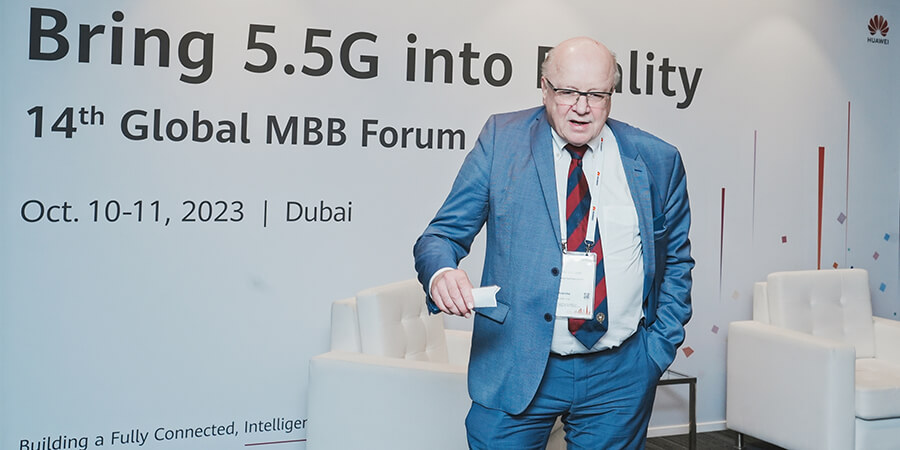With regards to the slow roll out of 5G in the European Union (EU) and the transition to 5.5G impacting industries and societies at large, Professor Peter Sachsenmeier, a Fellow of German National Academy of Science and Engineering, shared with Telecom Review his insights during Huawei’s Global Mobile Broadband Forum (MBBF) 2023.
When asked about the implications for moving towards Industry 4.0 and the completion of the EU’s Digital Decade goals from the relatively slow roll out of 5G, Professor Sachsenmeier pointed out three typical stakeholders who have to work together in realizing the potential of 5G, as well as the evolutionary step towards 5.5G.
“With 5G, we have a new tool. It's an enabler, but it doesn't do magic. You can't wave 5G and then hope that something happens. You have to work on it.”
To feel the difference between 5G/5.5G and the previous generations, providers, service creators and the users must work together in developing applications that use the capabilities of the enhanced network.
Defining the stakeholders, providers either offer public 5G service or a company or location-specific 5G private service. On the other hand, service creators are those who build different kinds of things into their work depending on the necessity. Lastly, users consist of both business users or end customers.
In the slow corporate environment, when dealing with a legacy system and then introducing a new system, “unbelievable time and money” are added to the whole process. The professor highlighted the fact that people have running systems for what they do, and find it difficult to transition to something new.
“Grappling with a transition to a more digital existence, they find these digital business models a terrible challenge.”
In Europe’s scenario, medium-sized companies are challenged to become more digital, and they don't know what it means.
“It's our task to make sure that companies understand and have examples of what we mean to go into more digital world and then if they want to more tightly pack their processes in real-time, with more precise location and network capacity, then 5G and 5.5G are very good answers.”
5G-Advanced: Meeting the Demands of Real-World Applications
To the general public, the difference between 5G and 5G-Advanced is not distinct. But when we consider the progress from 2019, the year when 5G was introduced, the transition in the span of four years has been remarkable.
“I think the transition to 5G will be felt, especially if 5G isn't only a technology built on top of existing 4G networks,” explained Professor Sachsenmeier.
In IT and communications, the development of self driving cars is evident. This is one of the use cases presented by the professor benefiting from the innovative features of 5G such as lower latency, faster transmission speeds, precise localization and increased capacity.
In every second of a self-driving car’s journey, there's a data burst, which, in reality, is beyond the capability of today's data centers to handle. This data burst is driven by in-vehicle data, gathered by modern sensors as well as the communication among other vehicles on the road.
Professor Sachsenmeier rationalized that in 4G, GPS is used, and it has a tendency to become vague. Citing a [self-driving] car’s displacement and latency, that can cause an accident, “in 5G-Advanced, we are trying to get to a localization difference of 10 centimeters.”
Considering roughly 300,000 cars communicating every second, “we have to think much harder in terms of what's now called edge computing.” Edge computing means that a lot of the decision making is taken by sensors, much nearer to the car.
As per the professor, 5G-Advanced still has its limitations such as geographical reach and penetration, but the key in making it work is urging the three stakeholders to create real-world applications.
“From my own technology and working biography, there is a tremendous charm in developing a technology and to fall in love with that technology. The reality is that without the other two stakeholders, that technology is nothing.”
The ecosystem is important for the second category – the people who create the services – if we consider services in a very broad way. But customers remain as the most important part.
“In every technology, the best testimonials are from customers. And the most credible testimonials are from customers who tell you about the mistake, and then we rectify the mistake, to serve them better,” concluded Professor Sachsenmeier.










